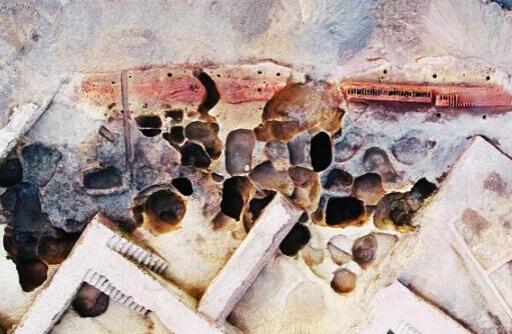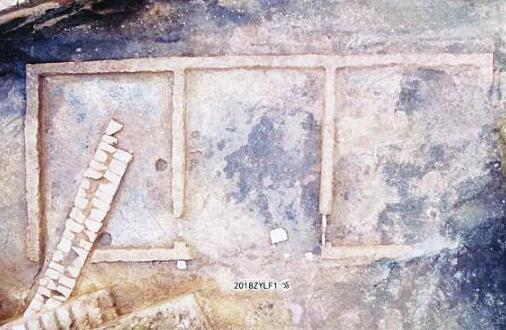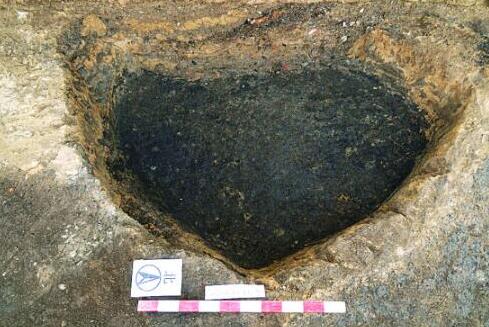Significant Excavation Accomplishments of the Zinc Smelting Site in Chongqing
Located in Yangdu Town, Zhong County, Chongqing City, the Zinc Smelting Site was preliminarily determined as a site for zinc smelting during the investigation in 2012. Chongqing Cultural Heritage Research Institute implemented two salvage excavations in 2013 and 2017 successively, with an area of 5,000 square meters, 12 zinc smelting workshop remains of Ming Dynasty, more than 200 remains of zinc smelting, including 18 zinc smelting furnaces, and smelting pots, condensation pits, and other relics of various kinds, approximately 1,000 pieces in total, most of which were of mid and late Ming Dynasty.

Workshop area
From May to September of 2018, the third archaeological salvage excavation of the site was carried out, with an area of 10,000 square meters explored and 2,073 square meters excavated. Smelting remains of all kinds were cleared, including furnaces, pits, ditches, post holes and kilns, totally 139 features. And 711 pieces of various relics were unearthed, such as potteries, ceramics, bronze wares, and iron wares. Slag, coal, wood chip, animal bones and dozens of other specimens for testing were collected. Great achievement was made during this excavation.

Filling area
An area special for raw material filling was found for the first time. The two key process, raw material filling and smelting of the zinc production techniques, were proved with physical proof. Based on the previous discoveries and investigations, a single zinc smelting remains could be divided into two main parts inside: work area and waste accumulation area. The work area was keep the furnace as the central and surrounded by assemblage related to smelting, including post holes, drainage, coal storage pits, coal refining pits, water storage pits and mud pits, with the smelting furnace as the key part. While the waste accumulation area lied along both sides of the smelting remain, mainly the faults, lowland and ravines along the riverside. An ash pit cleared this year was oval in the plane, where there were lots of unused smelting pots piling up orderly with all mouths outward in three rows, approximately 160 pieces. Besides, in the northeast part of the same ash pit, another ash pit of the regular structure was also uncovered, with the unearthed part of an oval shape. According to the portable XRF test and comprehensive judgments on other ash pits of similar structure, the newly-found one was used to store mineral. In addition, there were mixing pits, mud pits, water storage pits and many more around the above ash pits, which displayed the whole raw material filling process, from raw material storage, mixing with raw material and reducing agents (coal) to putting into pots, condensation pits making and coating. The zinc smelting technical process of the period was clearer, on the basis of the relevant discoveries at the smelting site.

Workshop Area

The furnace
Building foundations were first found at the site. Two housing foundations were cleared in the west of the Site of the higher area. The F1 was well-preserved with three rooms in a row, each of which was 15 meters in width and 6.1 meters in depth. And the walls, 0.4 meters in width and 0.2 - 0.35 meters remnant in height, were made of yellow clay. The doorway of the middle room was gone. But there were stone doorways in the two east-west rooms at both ends to the north of the walls; while in the south, there was a drainage ditch out of the house. It could be inferred that this housing foundation was either a warehouse for finished products or a rest area for craftsmen, instead of a workshop or a residence since neither smelting furnace nor kitchen range was found inside. Furthermore, it was common that both sides of the smelting furnace had post holes in a line orderly, according to the previous excavations. So post holes were found at both sides of the north-south smelting furnace during excavation of the four this time, among which the L19 post holes were placed regularly with a distance of 0.6 meter away from the hearth. Discoveries of the year helped confirm that the production at the smelting site was implemented under some sheds around the furnace rather than in open-air.

Coal storage pit
Firstly, during the recent excavation, it was found that smelting furnaces on different working platforms and the matching ash pits were overlapped by the later ones, which indicated that the remains were not formed for the use within a short time, as a result of constant smelting production in different phases. And the above information was the supplement to the research on periodization. Secondly, it was first confirmed the nature and functions of the features, including storage pits for materials and pots respectively, and materials mixing pits, by means of both archaeological excavation and scientific test, and defined the partition of the smelting site inside, so that we could restore a comprehensive zinc smelting technical process of the Ming Dynasty with such vital information. Finally, an integrated dating database of the relics could be established with more than 10 pieces of wood chips and animal bone specimens unearthed this time and those dating specimens uncovered previously, which played an essential role in the origin of zinc smelting techniques, development and transmission in ancient China. (Translator: Yuan Yuan)

